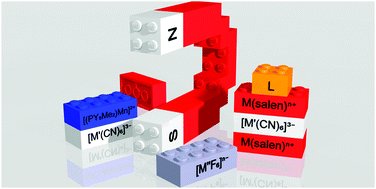Single-molecule magnet engineering: building-block approaches†
Abstract
Tailoring the specific magnetic properties of any material relies on the topological control of the constituent metal ion building blocks. Although this general approach does not seem to be easily applied to traditional inorganic bulk magnets, coordination chemistry offers a unique tool to delicately tune, for instance, the properties of molecules that behave as “magnets”, the so-called single-molecule magnets (SMMs). Although many interesting SMMs have been prepared by a more or less serendipitous approach, the assembly of predesigned, isolatable molecular entities into higher nuclearity complexes constitutes an elegant and fascinating strategy. This Feature article focuses on the use of building blocks or modules (both terms being used indiscriminately) to direct the structure, and therefore also the magnetic properties, of metal ion complexes exhibiting SMM behaviour.


 Please wait while we load your content...
Please wait while we load your content...